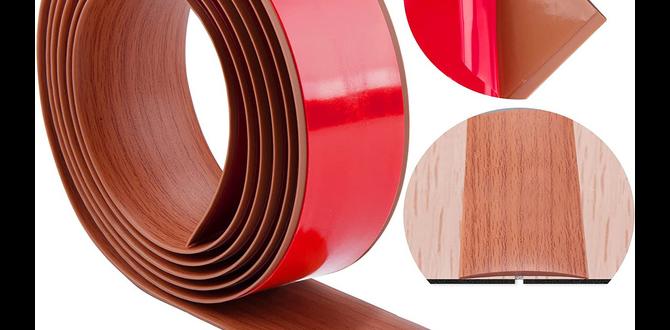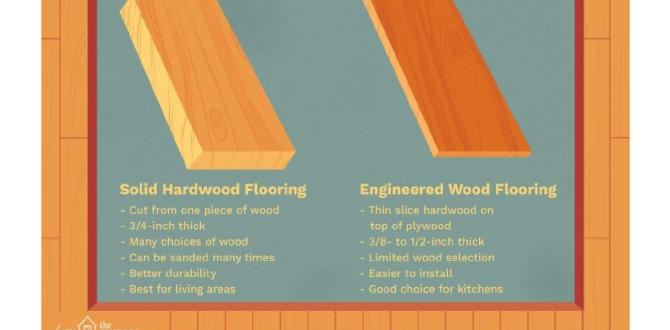Quick Summary: Always wear essential pneumatic nailer safety gear, including safety glasses, hearing protection, and gloves, to prevent injuries. Understanding and using the right protective equipment is crucial for a safe DIY woodworking experience.
Hey there, fellow DIYers and woodworking fans! Jack Shaffer here from Nailerguy, ready to talk about something super important: staying safe when you’re using that awesome pneumatic nailer of yours. These tools are fantastic for getting projects done faster and with a cleaner finish, but if we’re not careful, they can also cause a nasty surprise. Nobody wants a misplaced nail or a loud bang to ruin their day. Don’t worry, though! We’ll walk through exactly what you need to know to keep yourself protected. It’s simpler than you might think, and it opens the door to tackling more projects with real confidence.
Table of Contents
Why Pneumatic Nailer Safety Gear is Non-Negotiable
Let’s be honest, it’s easy to get excited about a project. You’ve got the wood, the plans, and that powerful nail gun ready to go. Sometimes, putting on safety gear can feel like an extra step that slows you down. But here’s the truth: no project is worth risking an injury. A little bit of preparation goes a long, long way.
Pneumatic nailers, also known as air nail guns, use compressed air to drive nails into wood at high speeds. This power is what makes them so efficient, but it also means something can go wrong very quickly if safety isn’t your top priority. Think of your safety gear not as a burden, but as your essential toolkit for a successful, injury-free build. We’re talking about keeping your eyes sharp, your hearing intact, and your hands safe. Let’s dive into the specific gear that will keep you working like a pro.
The Absolute Must-Haves: Your Core Pneumatic Nailer Safety Gear
When you’re venturing into the world of pneumatic nailers, having the right safety gear is your first line of defense. These aren’t optional extras; they are fundamental to protecting yourself. Let’s break down the essential items you should have on hand before you even think about firing up the compressor.
1. Eye Protection: Your Windows to the World
This is hands-down the most critical piece of safety gear you’ll wear. A stray nail, a piece of flying debris from the wood, or even a malfunction can send something directly towards your eyes. Regular eyeglasses or sunglasses are NOT sufficient. You need specialized safety glasses or goggles.
- Safety Glasses: Look for ones that meet specific safety standards, like ANSI Z87.1. They should have side shields to protect from projectiles coming from the sides, and a snug fit so they don’t slip. Many DIYers find lightweight, clear-lensed safety glasses comfortable for extended wear.
- Goggles: For even greater protection, especially in dusty environments or when there’s a higher risk of flying debris, full seal goggles are a great option. They offer a more secure fit around the eyes.
- Anti-Fog Coating: If you live in a humid climate or tend to work up a sweat (which is common during DIY projects!), consider glasses or goggles with an anti-fog coating. This will keep your vision clear.
Why it’s crucial: The eyes are incredibly vulnerable. Even a tiny splinter can cause permanent damage. Think of your safety glasses as the force field for your vision. You can buy decent safety glasses for a very reasonable price, making them one of the best investments you can make for your DIY hobby.
2. Hearing Protection: Saving Your Ears for Future Projects
Pneumatic nailers are loud. Really loud. The rapid firing of the nail, combined with the air release, percussive force can lead to temporary or even permanent hearing loss if you’re consistently exposed without protection. This is especially true in enclosed spaces or when using the tool for extended periods.
- Earplugs: These are small, flexible plugs that you insert directly into your ear canal. Foam earplugs are very common and effective, but require proper insertion to create a good seal. Reusable silicone earplugs are also a great option and can be more comfortable for some.
- Earmuffs: These fit over your entire ear. They often provide a higher Noise Reduction Rating (NRR) than earplugs and can be more comfortable if you don’t like things inside your ear. They are also easy to slip on and off.
- Combined Protection: For maximum protection, you can wear both earplugs and earmuffs, especially in extremely noisy environments.
Why it’s crucial: Hearing damage is cumulative and irreversible. Protect your hearing now so you can continue to enjoy conversations, music, and all the sounds of life for years to come. Check the NRR rating on your hearing protection – a higher number means more noise reduction. Aim for an NRR of 20 dB or higher when using a nailer.
3. Hand Protection: Guarding Your Grip
While it might seem obvious, protecting your hands is vital. You use your hands to hold the material, steady the nailer, and operate controls. They are also the closest part of your body to the nailer’s firing mechanism. Good work gloves will offer protection from splinters, abrasions, and minor impacts.
- Durable Work Gloves: Look for gloves made from sturdy materials like leather or synthetic leather. They should offer a good grip, especially if you’re working with smooth materials like finished lumber or melamine.
- Comfort and Fit: Ensure the gloves fit well. They shouldn’t be so tight that they restrict your movement or so loose that they get caught on things. A comfortable glove allows for better control of the tool.
- Consider Impact Protection: Some work gloves come with extra padding or reinforced knuckles, offering an added layer of protection against bumps and scrapes.
Why it’s crucial: Your hands are essential for everything you do, from fine woodworking tasks to everyday life. A cut from a splinter or a scrape from rough material can make using your nailer uncomfortable and even dangerous by impacting your grip. Good gloves keep your hands safe and allow you to maintain firm control over the tool.
Beyond the Basics: Enhancing Your Safety Arsenal
Once you’ve got the core three – eyes, ears, and hands – covered, there are a few other items that can significantly boost your safety, especially depending on the type of project and your work environment.
4. Foot Protection: Sturdy Soles for a Stable Stance
You might not think about your feet when operating a nailer, but they are your foundation. Slipping on sawdust, accidentally dropping a piece of lumber, or even a stray nail finding its way to the floor can be hazardous. Sturdy footwear provides stability and protection.
- Closed-Toe Shoes: Always wear closed-toe shoes. Sandals, flip-flops, or open-toed shoes are a definite no-go.
- Work Boots: Steel-toe or composite-toe work boots offer the best protection against falling objects. They also provide excellent ankle support and slip-resistant soles, which are invaluable on a busy workshop floor.
- Good Traction: Ensure the soles of your footwear have good traction. This is especially important if your workshop floor is prone to dust or if you’re working on an uneven outdoor surface.
Why it’s crucial: A stable footing is essential for accurate nailing and overall safety. Protecting your feet from drops and accidental nail impacts can prevent serious injuries that could sideline you from your projects.
5. Respiratory Protection: Breathing Easy
Depending on the materials you’re working with and the environment, you might need more than just basic eye and hand protection. Sawdust, wood dust, and fumes from adhesives or finishes can be harmful to inhale.
- Dust Mask (N95 or higher): For general woodworking and dealing with fine dust particles, a disposable N95 respirator mask is highly recommended. These are designed to filter out at least 95% of airborne particles.
- Respirator with Cartridges: If you’re working with finishes, glues, solvents, or materials that off-gas potentially toxic fumes, a reusable respirator with appropriate cartridges is necessary. Look for cartridges rated for organic vapors or specific chemicals you’re using.
Why it’s crucial: Long-term exposure to certain types of dust and fumes can lead to respiratory problems, some of which can be serious or even irreversible. Protecting your lungs is just as important as protecting your eyes and ears.
6. Protective Clothing: Covering Up
While not always strictly required for every single nail gun use, wearing appropriate clothing can offer an extra layer of protection against splinters, minor cuts, and abrasives.
- Long Sleeves and Pants: Opt for durable fabrics like denim or canvas. This guards your skin against scrapes and splinters from lumber.
- Avoid Loose Clothing: Make sure your clothing isn’t excessively loose. Baggy sleeves or pant legs could potentially get snagged on the workpiece or the tool itself, creating a hazard.
Why it’s crucial: It’s a simple barrier. It reduces the chances of minor skin abrasions and makes it easier to keep your workspace tidy by preventing stray dust and debris from sticking to your skin. For a more comprehensive understanding of workplace safety, you can refer to guidelines from organizations like the Occupational Safety and Health Administration (OSHA), which outline the principles of personal protective equipment (PPE).
Understanding Your Pneumatic Nailer & Its Safety Features
Beyond personal gear, your nailer itself has safety features designed to protect you. It’s essential to understand how these work and to ensure they are functioning correctly.
Trigger Lock-Off
Most pneumatic nailers have a mechanism that prevents accidental firing when you’re not actively pressing the trigger against the work surface. This is often called a “contact trip” or “safety contact” mechanism. Never disable this feature!
Safety Clip System
Some nailers have a safety clip on the magazine. This stops the nailer from firing if the clip is removed or if the magazine is empty. Always ensure this is in place and functioning.
Depressurized Storage
When you’re not using your nailer, always disconnect it from the air compressor and ensure it’s depressurized. Store it in a safe place where it won’t be accidentally bumped or triggered.
Understanding your specific nailer’s manual is key. It will detail its unique safety features and maintenance requirements.
When to Use What: Tailoring Your Gear to the Job
Not every task demands the full suit of armor. However, it’s always better to be over-prepared than under-prepared. Here’s a quick guide:
| Task/Environment | Essential Gear | Recommended Additional Gear |
|---|---|---|
| Basic Framing (e.g., building a deck frame) | Safety Glasses (ANSI Z87.1), Hearing Protection (earplugs or muffs, NRR 20+), Work Gloves | Steel-toe boots, Dust mask (N95) if cutting wood simultaneously |
| Finish Carpentry (e.g., installing trim, molding) | Safety Glasses (clear lens, anti-fog), Hearing Protection, Work Gloves (good grip) | Dust mask (N95) if sanding or cutting |
| Working in a Dusty/Enclosed Space | Safety Glasses (with side shields or goggles), Hearing Protection, Work Gloves | N95 Dust Mask or Respirator with P100 filters |
| Working with Finishes/Adhesives | Safety Glasses (chemical splash goggles if necessary), Hearing Protection, Work Gloves (chemical resistant if needed) | Respirator with organic vapor cartridges, Protective clothing (long sleeves/pants) |
| Occasional, Light Use (e.g., hobby projects) | Safety Glasses, Hearing Protection, Work Gloves | None typically required beyond basics, but always good practice |
This table is a good starting point, but always use your best judgment. If a job feels particularly hazardous or noisy, ramp up your gear accordingly.
Do’s and Don’ts of Pneumatic Nailer Safety Gear
To make things even clearer, here’s a quick rundown of what you should and shouldn’t do when it comes to your safety gear.
Do’s:
- Always wear safety glasses that meet ANSI Z87.1 standards.
- Wear appropriate hearing protection for every use.
- Use gloves that provide a good grip and protect your hands.
- Ensure your gear fits properly and is comfortable for extended use.
- Inspect your gear before each use for any damage.
- Keep your nailer clean and maintained according to the manufacturer’s instructions.
- Disconnect the air supply and depressurize the nailer when not in use or when changing nails.
- Read and understand your nailer’s manual.
- Use the correct type and size of nails for your nailer.
- Keep bystanders, especially children and pets, at a safe distance.
Don’ts:
- Never use a pneumatic nailer without proper eye protection.
- Do not ignore loud noises; always use hearing protection.
- Avoid wearing loose clothing that could get caught.
- Never disable your nailer’s safety features.
- Don’t point the nailer at yourself or anyone else, even when it’s depressurized.
- Avoid rushing; take your time to set up and use the tool correctly.
- Never use damaged safety gear.
- Do not use a nailer in an area with flammable vapors present.
- Avoid forcing the nailer; if it jams, follow proper clearing procedures.
Following these simple rules will significantly reduce your risk of accidents.
Maintaining Your Safety Gear
Your safety gear is only effective if it’s in good working condition. Just like you maintain your nailer, take a moment to care for your protective equipment.
- Inspect Regularly: Check your safety glasses for cracks or deep scratches that could impair vision. Ensure earmuff cups are intact and earplugs are clean. Examine gloves for holes or worn areas.
- Cleanliness: Clean your safety glasses with a soft cloth and mild soap. Wash reusable earplugs and earmuff pads according to their instructions. Keep gloves clean to maintain grip and hygiene.
- Replace When Needed: Safety glasses can become scratched or brittle over time. Earmuff cushions can lose their seal. Gloves wear out. It’s essential to replace any damaged or worn-out gear promptly. Don’t try to “make do” with compromised protection.
Investing in quality gear is the first step, but regular maintenance ensures that investment continues to protect you project after project. Websites like NIOSH (National Institute for Occupational Safety and Health) offer further insights into the importance and proper use of PPE in various occupational settings, which translates directly to DIY safety.
Frequently Asked Questions About Pneumatic Nailer Safety Gear
We get a lot of questions from fellow DIYers about nailer safety. Here are some of the most common ones:
Q1: Do I really need safety glasses if I’m only using the nailer for a quick job?
A: Yes, absolutely! Even a quick job carries risks. A nail can misfire, wood can splinter, or debris can fly unexpectedly. Safety glasses are non-negotiable for every single use, no matter how short.
Q2: Can I use my regular earbuds as hearing protection?
A: Regular earbuds are not designed for hearing protection and typically do not offer sufficient noise reduction for tools like pneumatic nailers. Dedicated earplugs or earmuffs are necessary to protect your hearing effectively.
Q3: What’s the difference between safety glasses and goggles?
A: Safety glasses are designed to protect your eyes from impacts and often have side shields. Goggles provide a closer, all-around seal around the eyes, offering a higher level of protection against dust, debris, and splashes.
Q4: My nailer is new, but it already jammed. Do I need special gear to clear it?
A: Always disconnect the air supply and depressurize the tool before attempting to clear a jam. While you’ll still want your basic safety gear (glasses, gloves) on, no specialized gear is usually required unless specified in your manual. Proceed slowly and carefully.
Q5: Can I share my safety glasses with someone else?
A: It’s best practice to have your own dedicated pair of safety glasses. Sharing can be unhygienic, and safety glasses can be molded to your face over time for a better fit. If sharing is unavoidable, ensure


